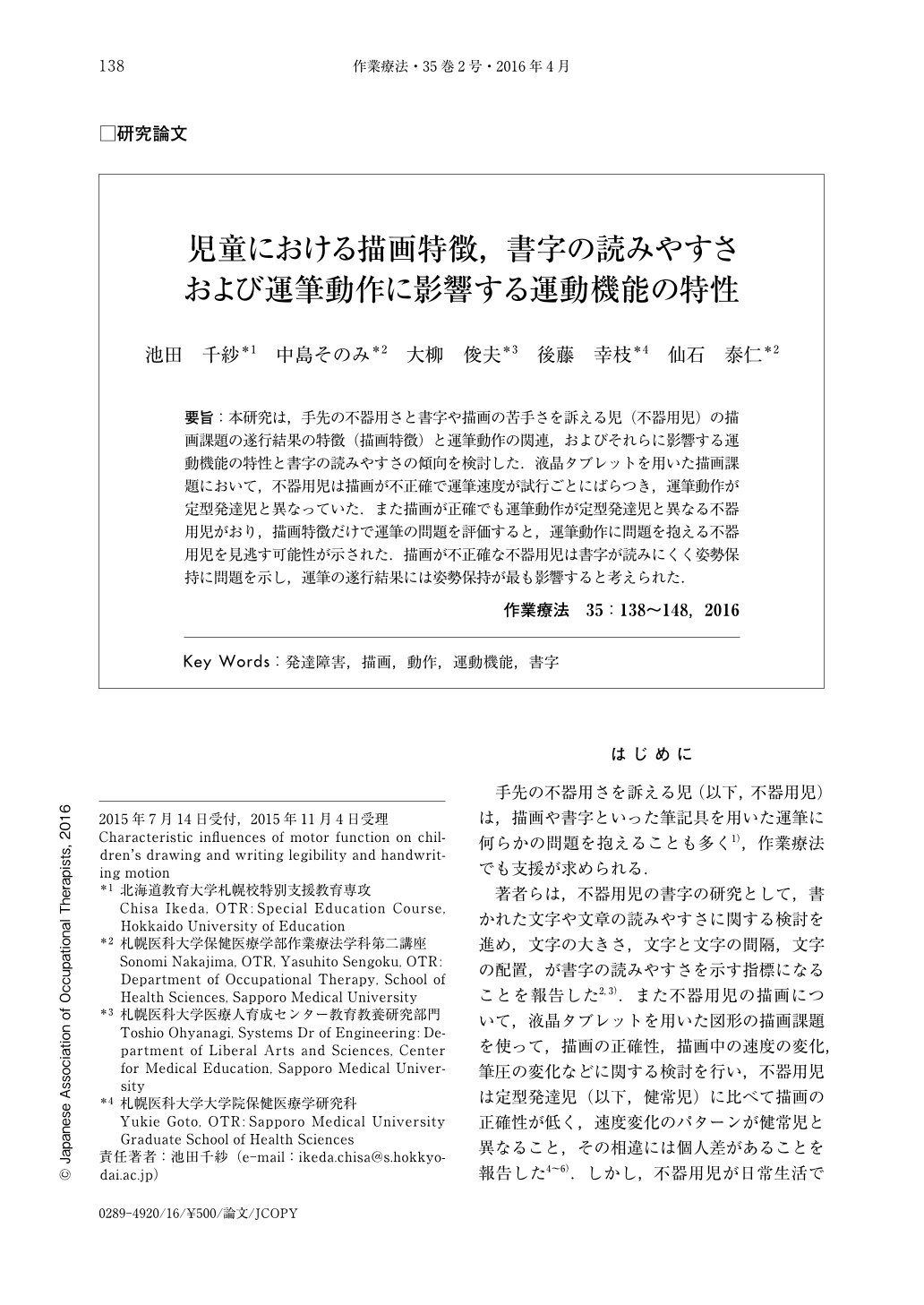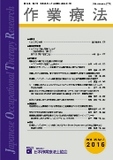Japanese
English
- 販売していません
- Abstract 文献概要
- 1ページ目 Look Inside
- 参考文献 Reference
- サイト内被引用 Cited by
要旨:本研究は,手先の不器用さと書字や描画の苦手さを訴える児(不器用児)の描画課題の遂行結果の特徴(描画特徴)と運筆動作の関連,およびそれらに影響する運動機能の特性と書字の読みやすさの傾向を検討した.液晶タブレットを用いた描画課題において,不器用児は描画が不正確で運筆速度が試行ごとにばらつき,運筆動作が定型発達児と異なっていた.また描画が正確でも運筆動作が定型発達児と異なる不器用児がおり,描画特徴だけで運筆の問題を評価すると,運筆動作に問題を抱える不器用児を見逃す可能性が示された.描画が不正確な不器用児は書字が読みにくく姿勢保持に問題を示し,運筆の遂行結果には姿勢保持が最も影響すると考えられた.
This paper investigated the characteristics of motor function that influence both the drawing characteristics and the handwriting motion of clumsy children, as well as discussed the legibility of their writings. Thus, we clarified the relationship between the characteristics of the results of a drawing task and handwriting motion during the task. To evaluate the handwriting skill of the participants, a drawing task utilizing a 2-cm-per-side triangle on a pen tablet computer was employed. For most of the clumsy children, the drawings were not accurate, the elapsed time for completing the task varied widely among the three trials, and the pattern of the handwriting motion was different from that of healthy children. There were some clumsy children whose drawings were accurate but whose pattern of handwriting motion was different from that of healthy children. This results suggest that evaluating handwriting problems of children by only the result of their drawings could fail to identify clumsy children who have a problem in their handwriting motion. We considered that the posture during handwriting largely influenced both the accuracy of drawing and the legibility of writing since most clumsy children had the different patterns of handwriting motions.

Copyright © 2016, Japanese Association of Occupational Therapists. All rights reserved.


